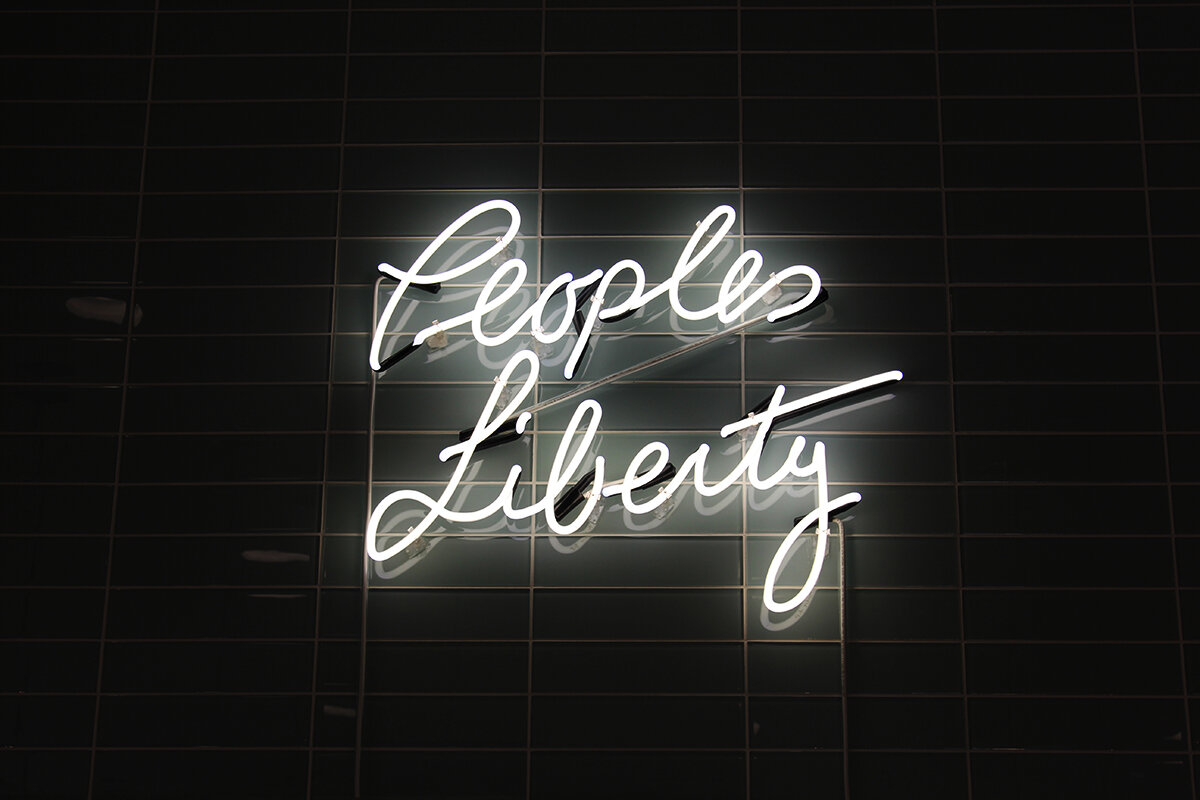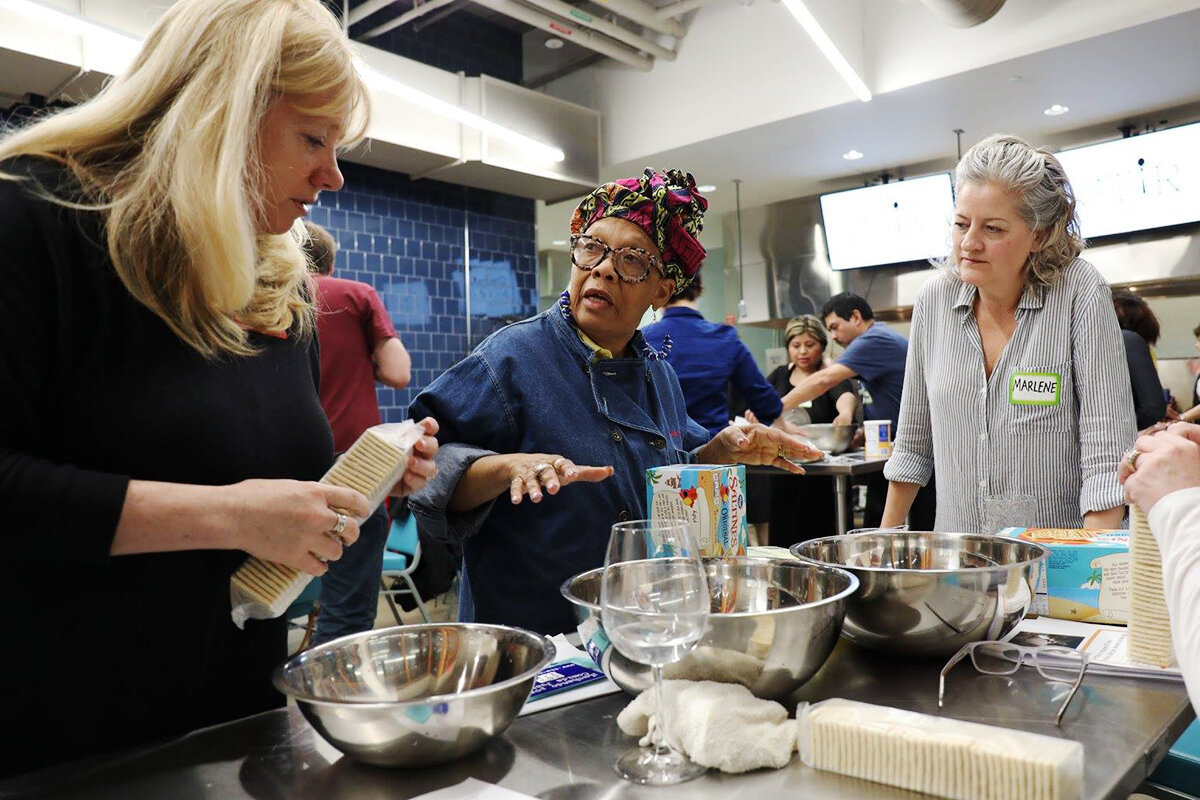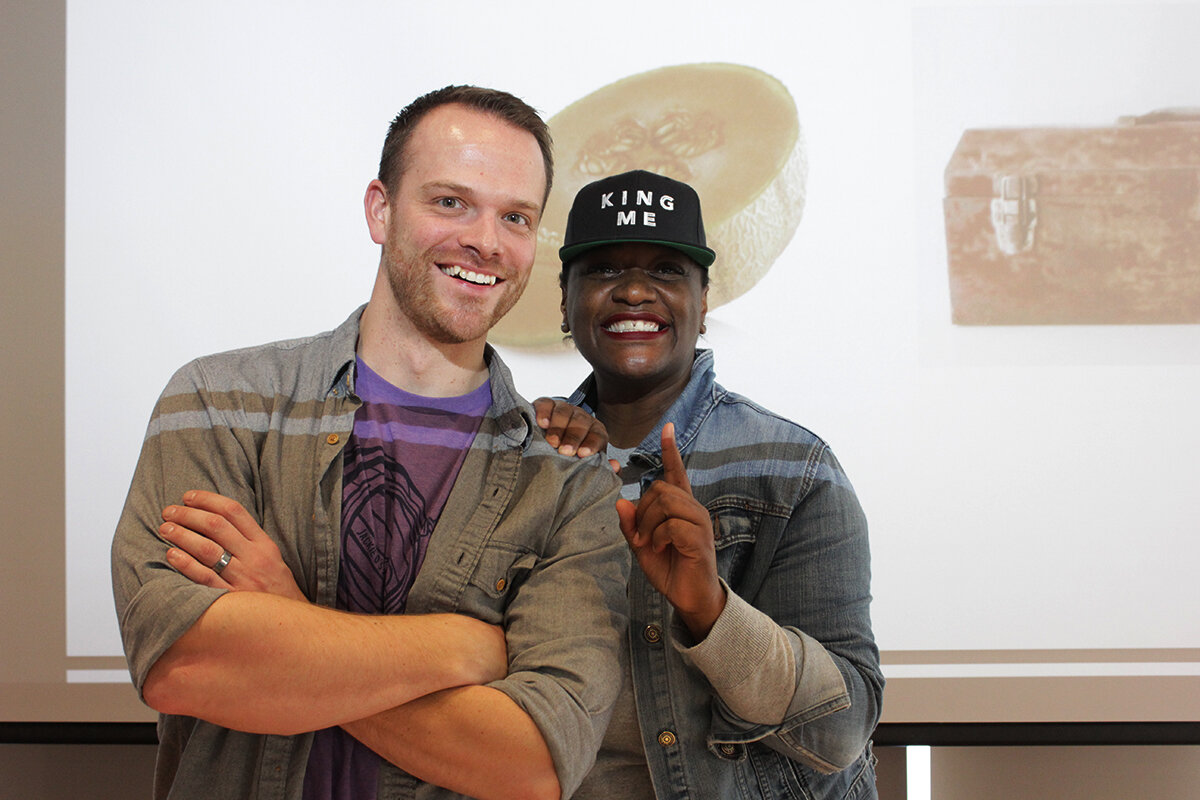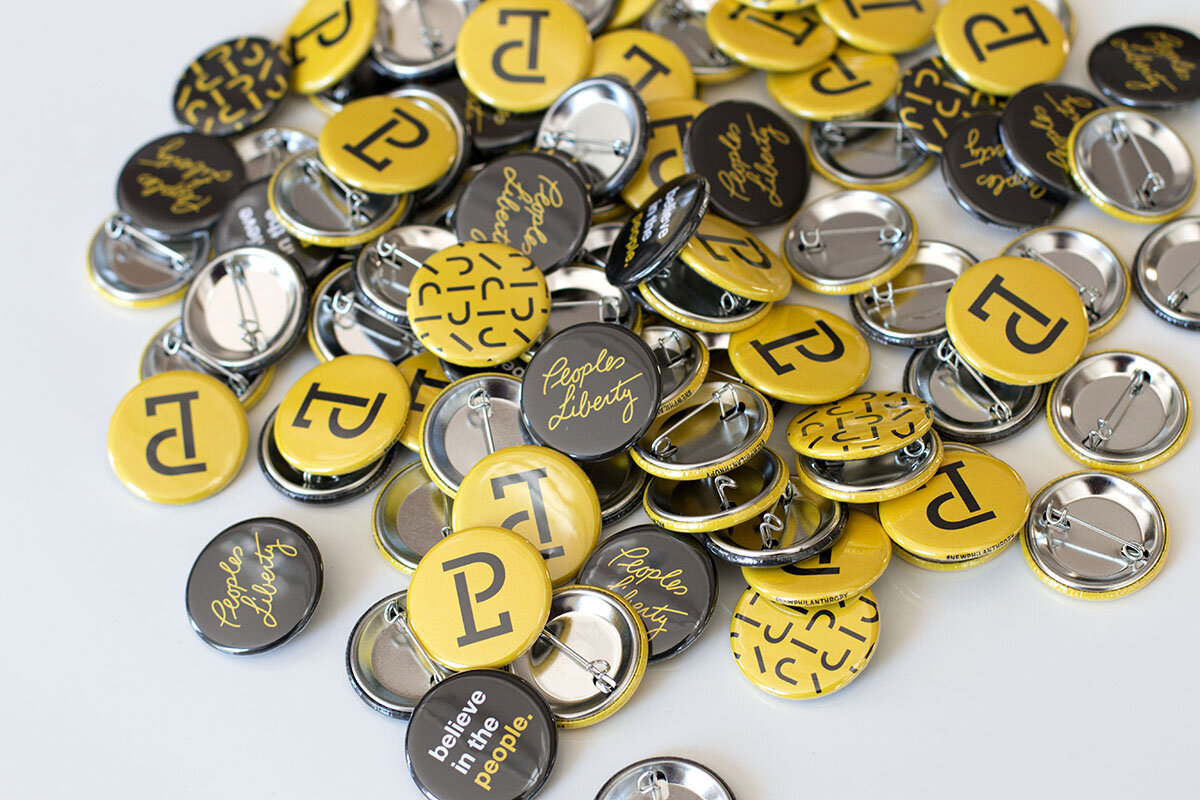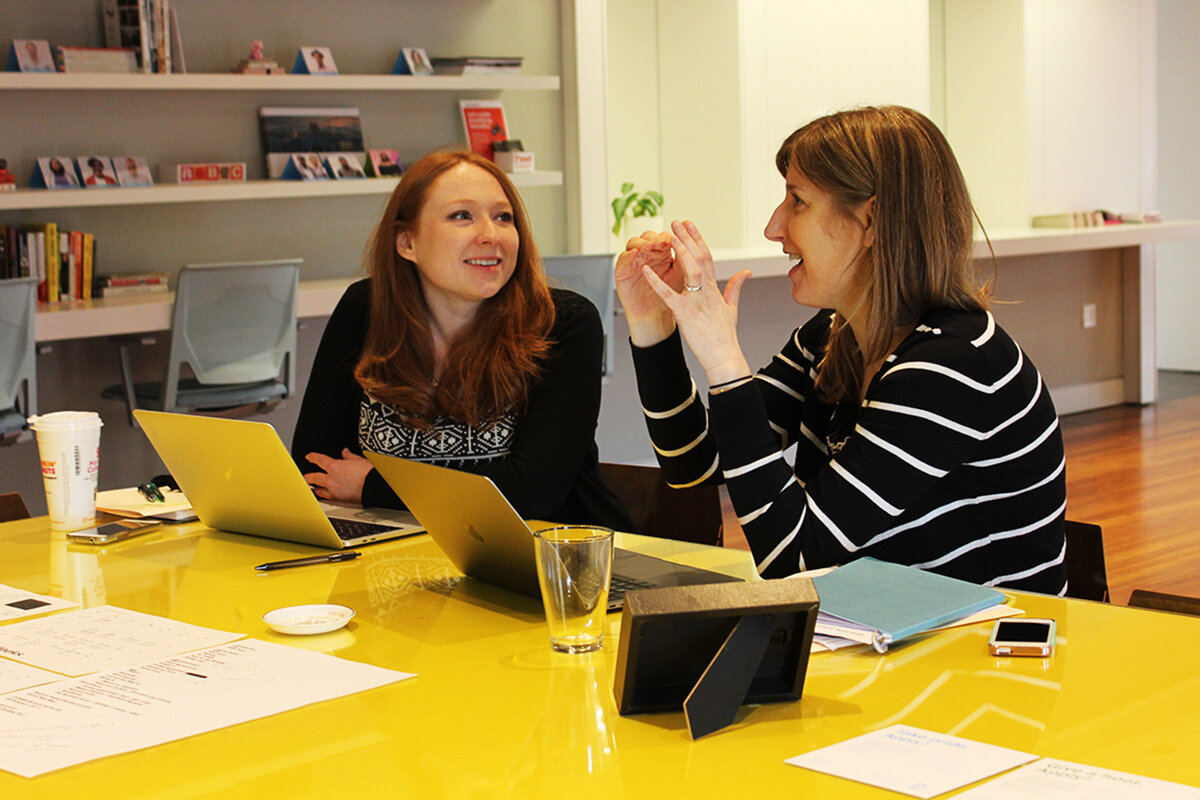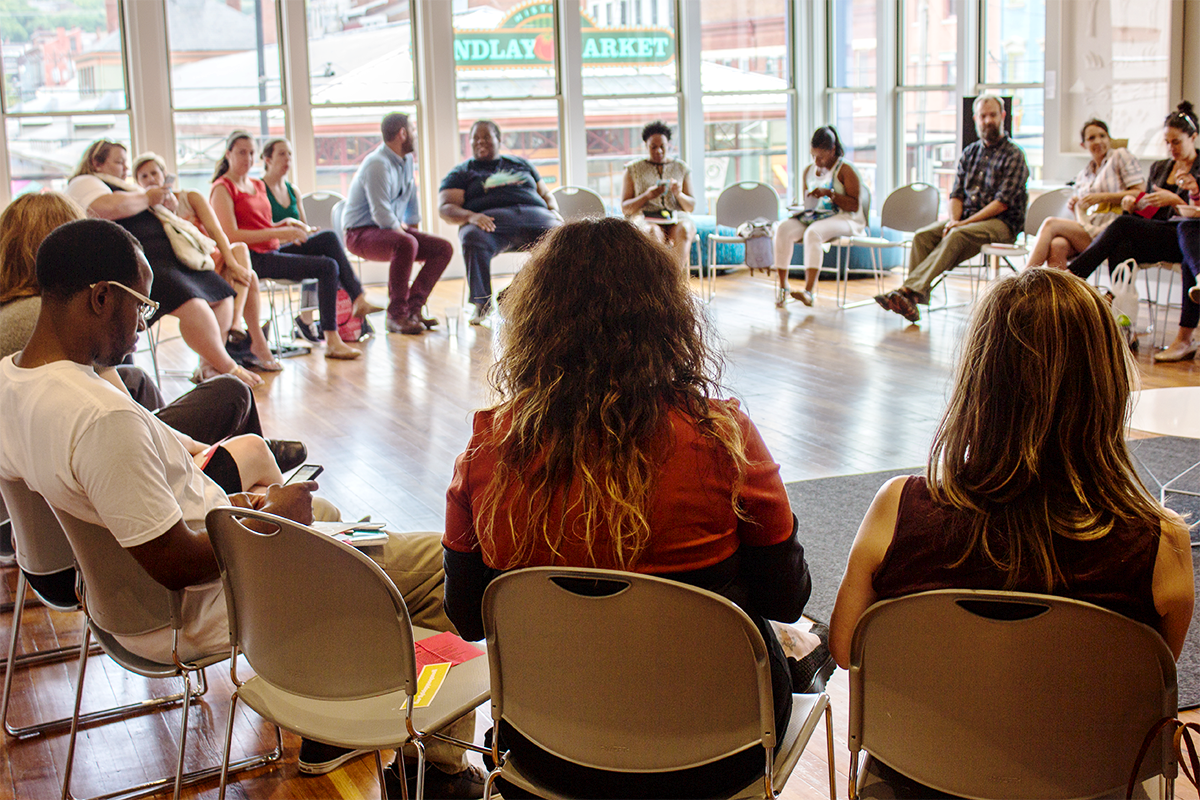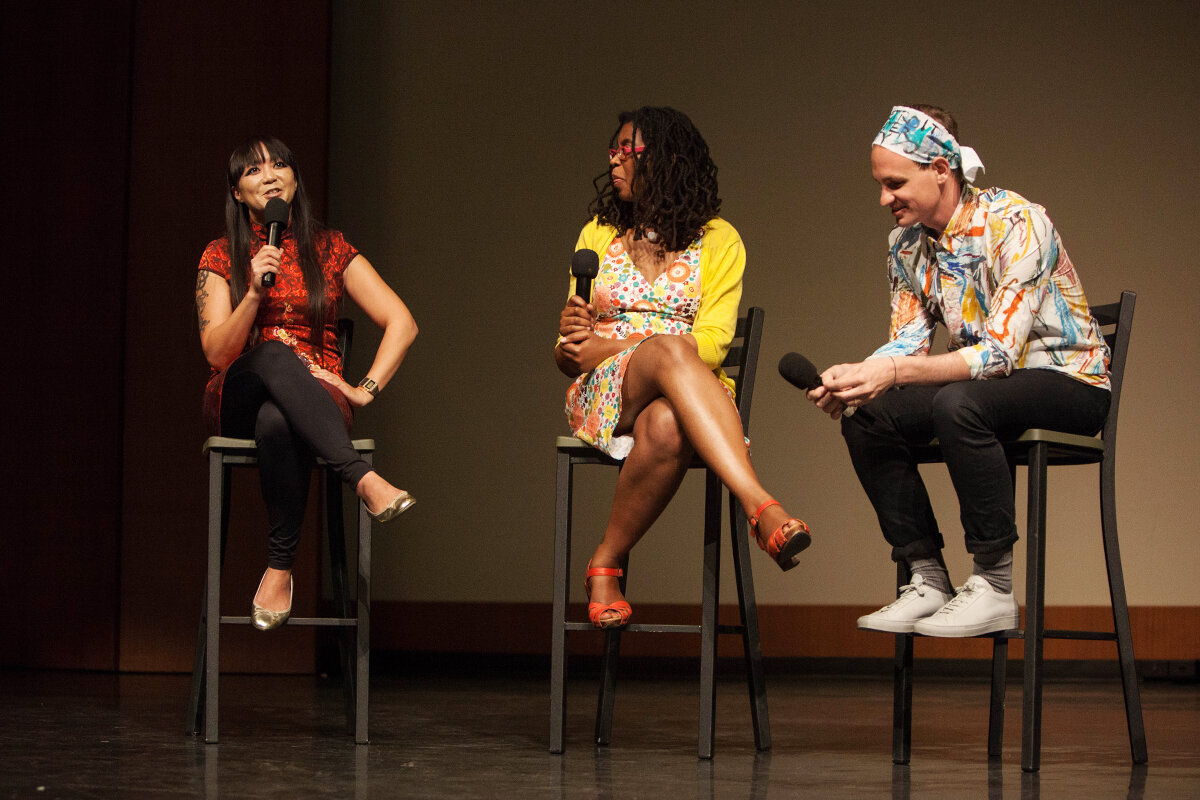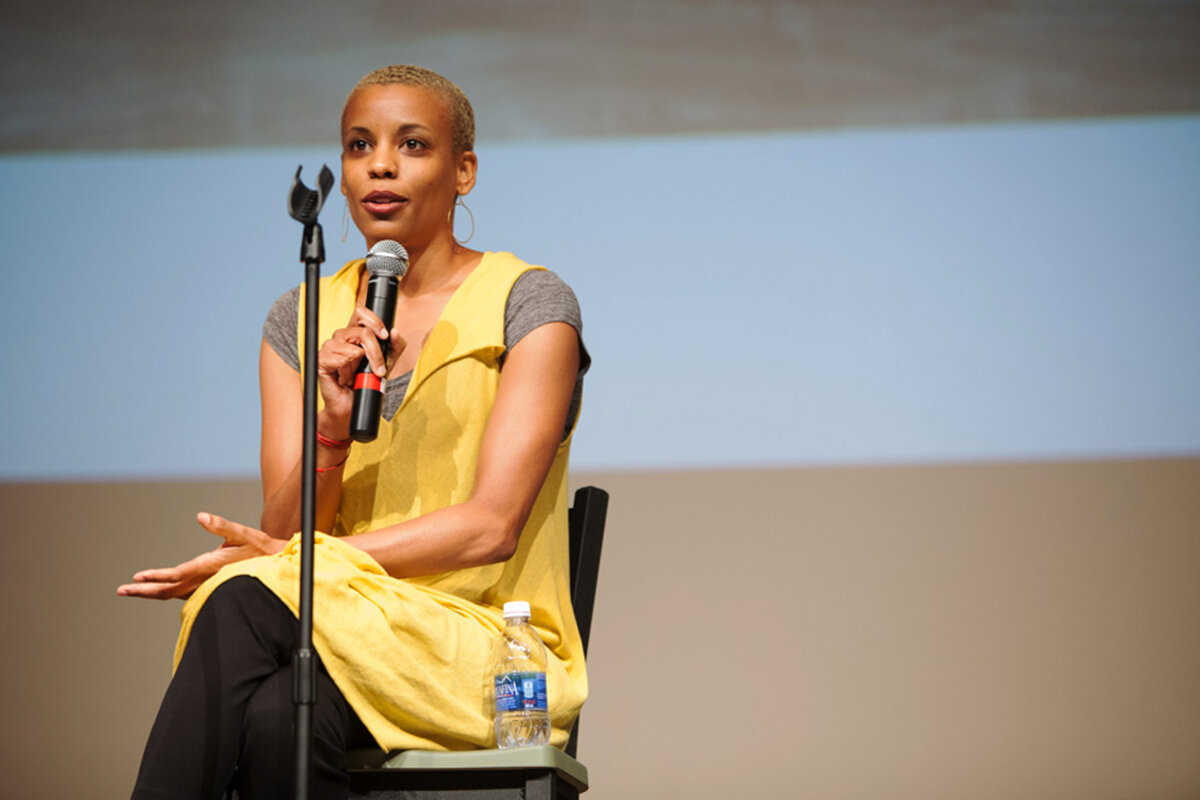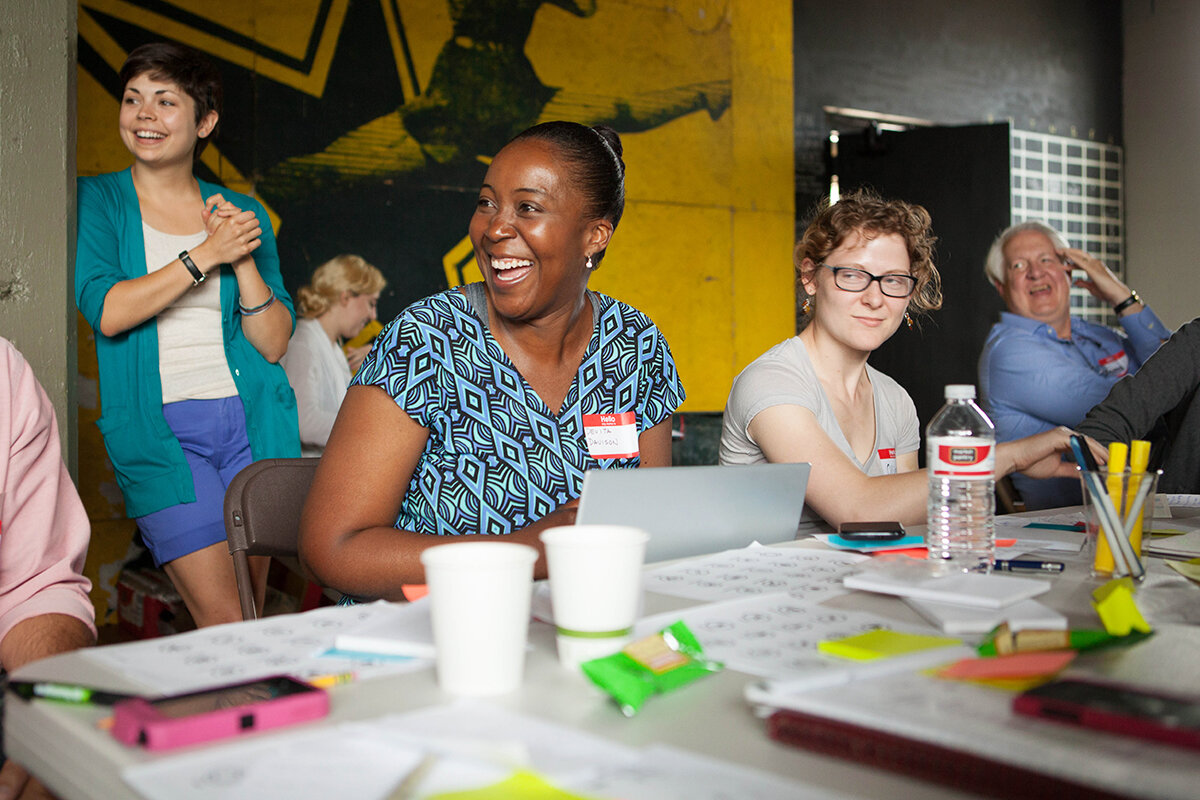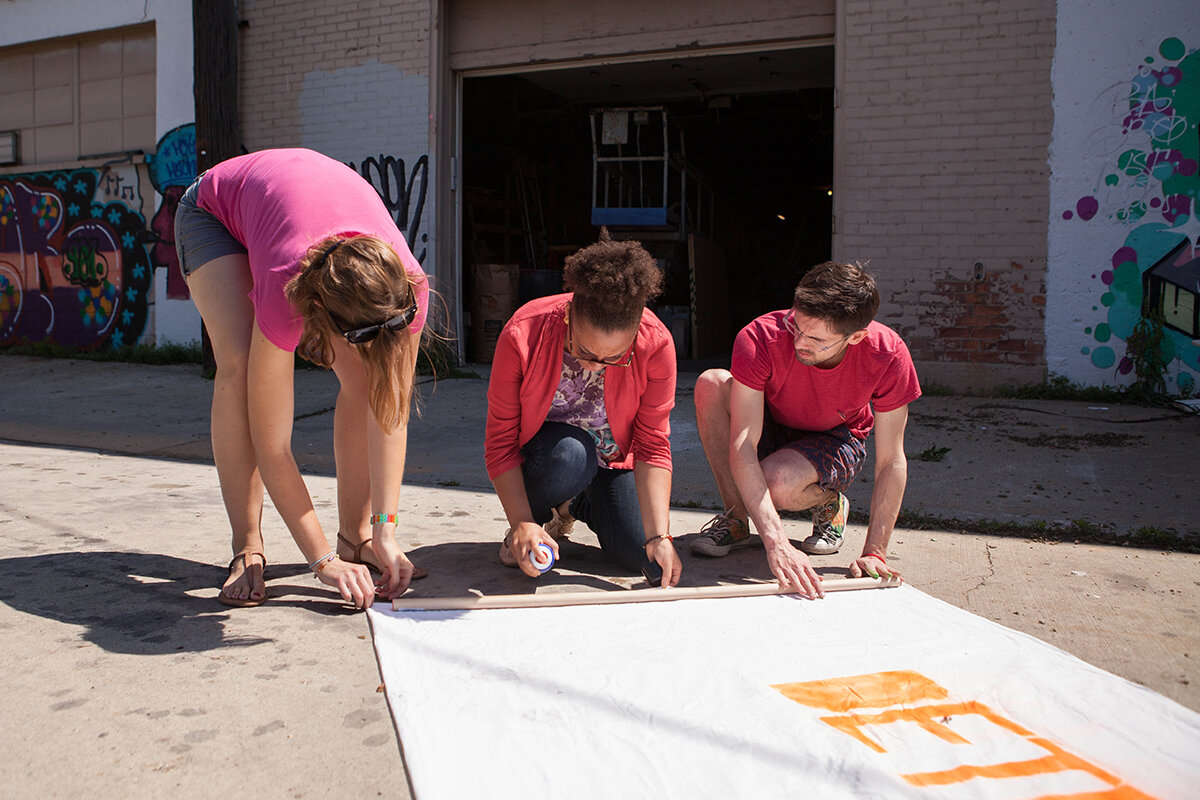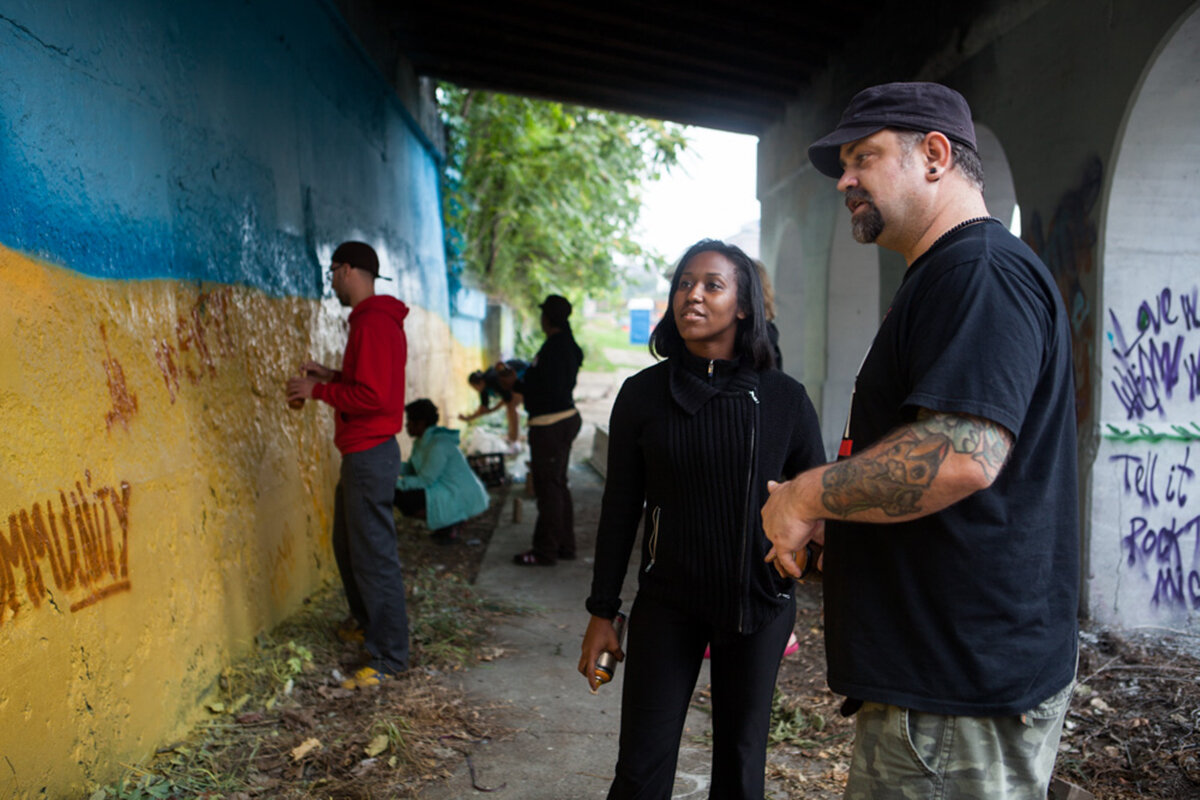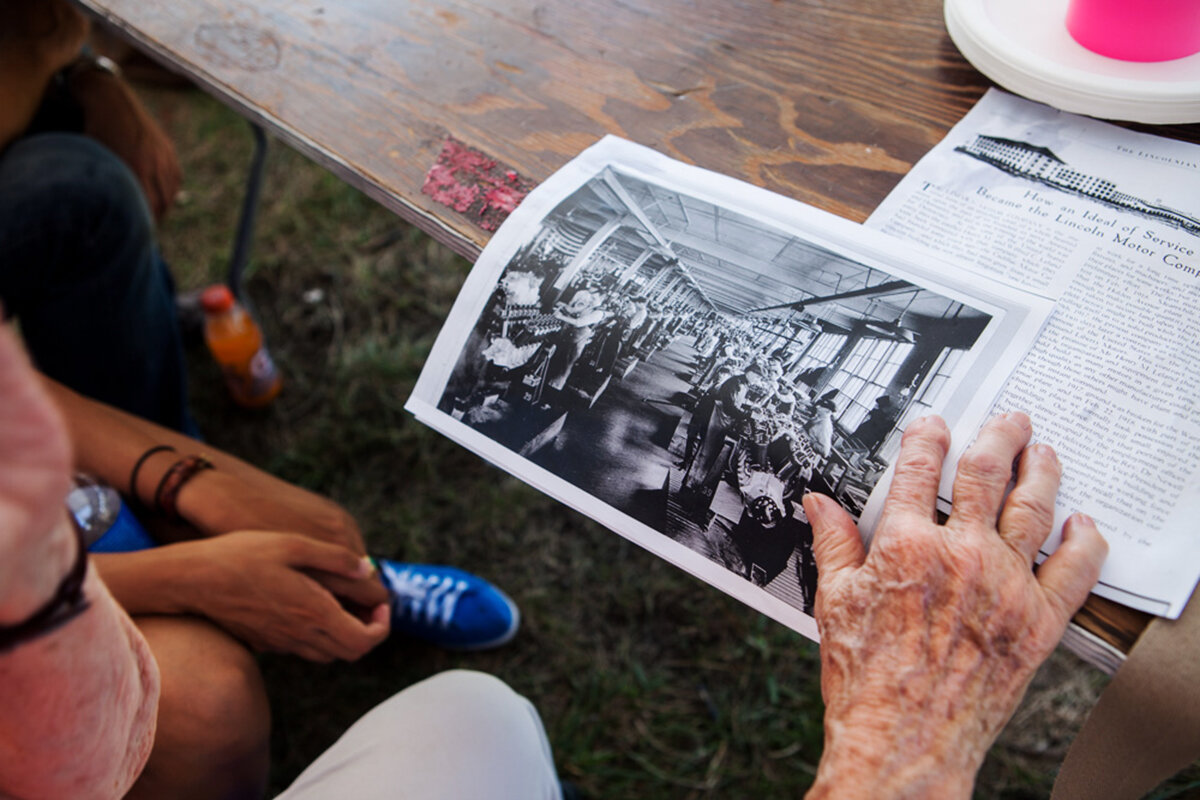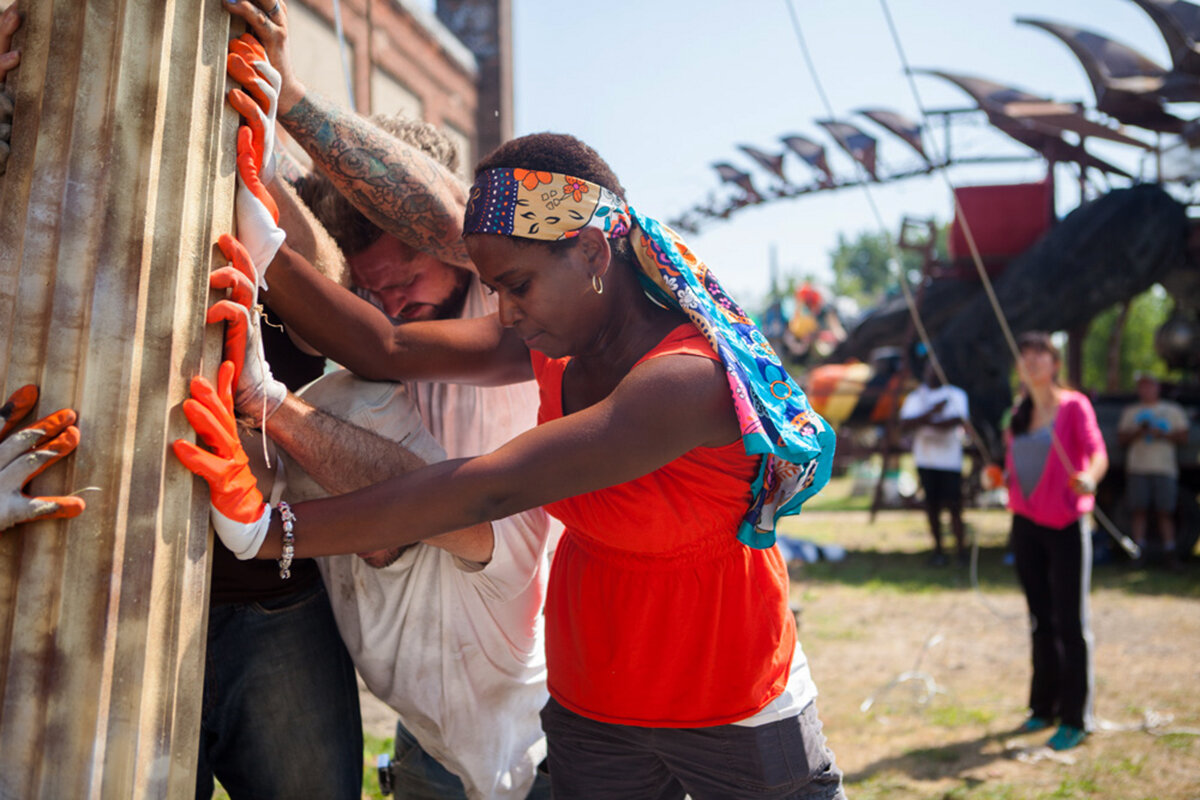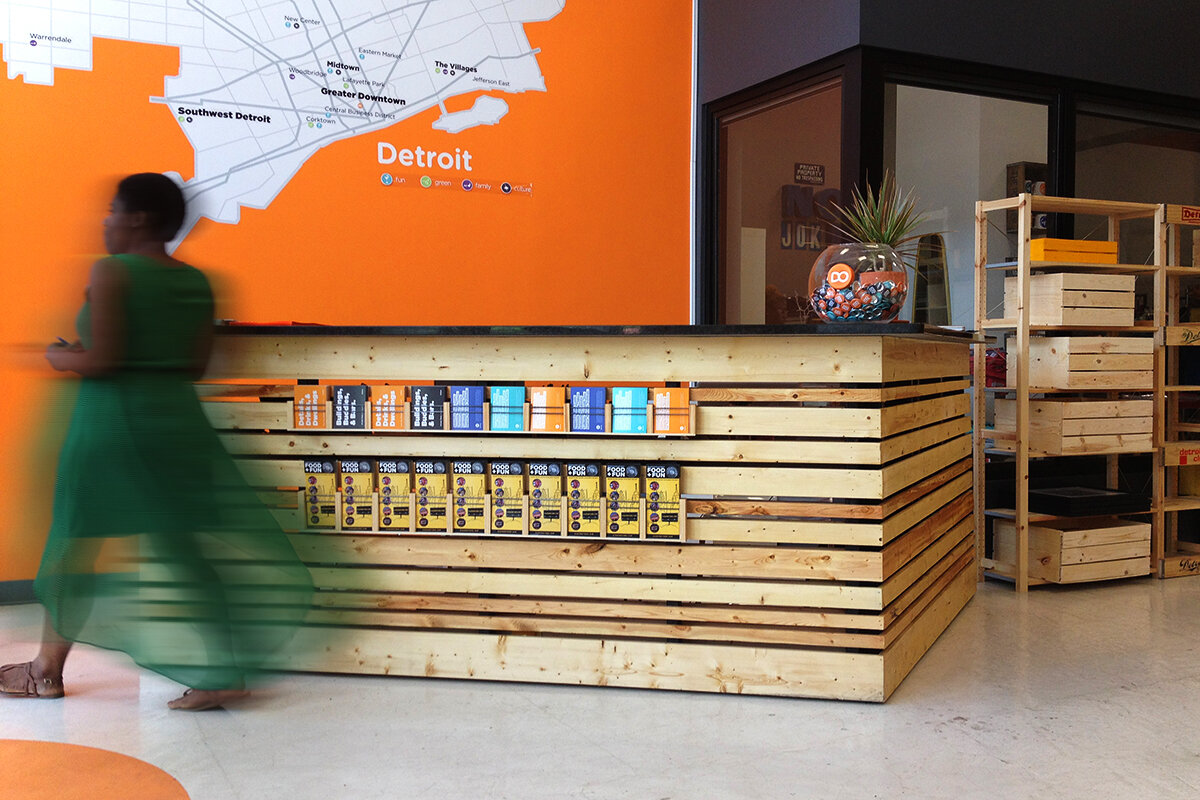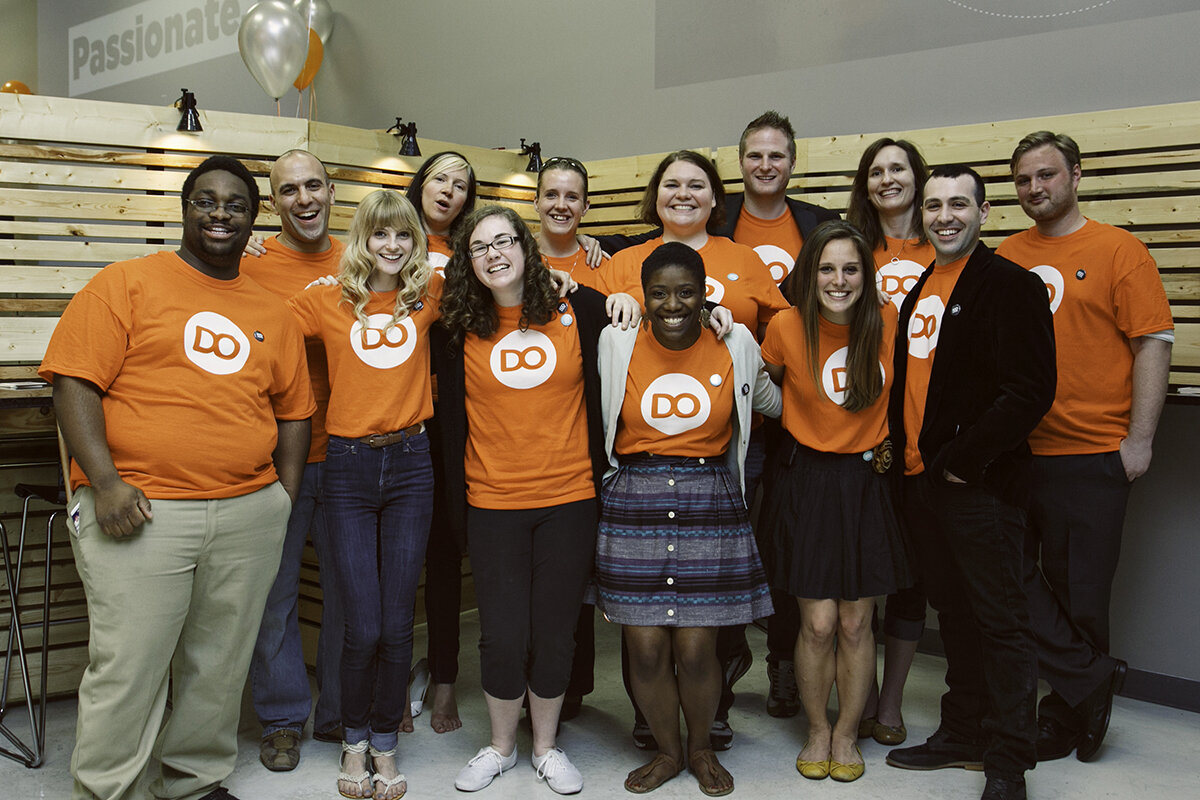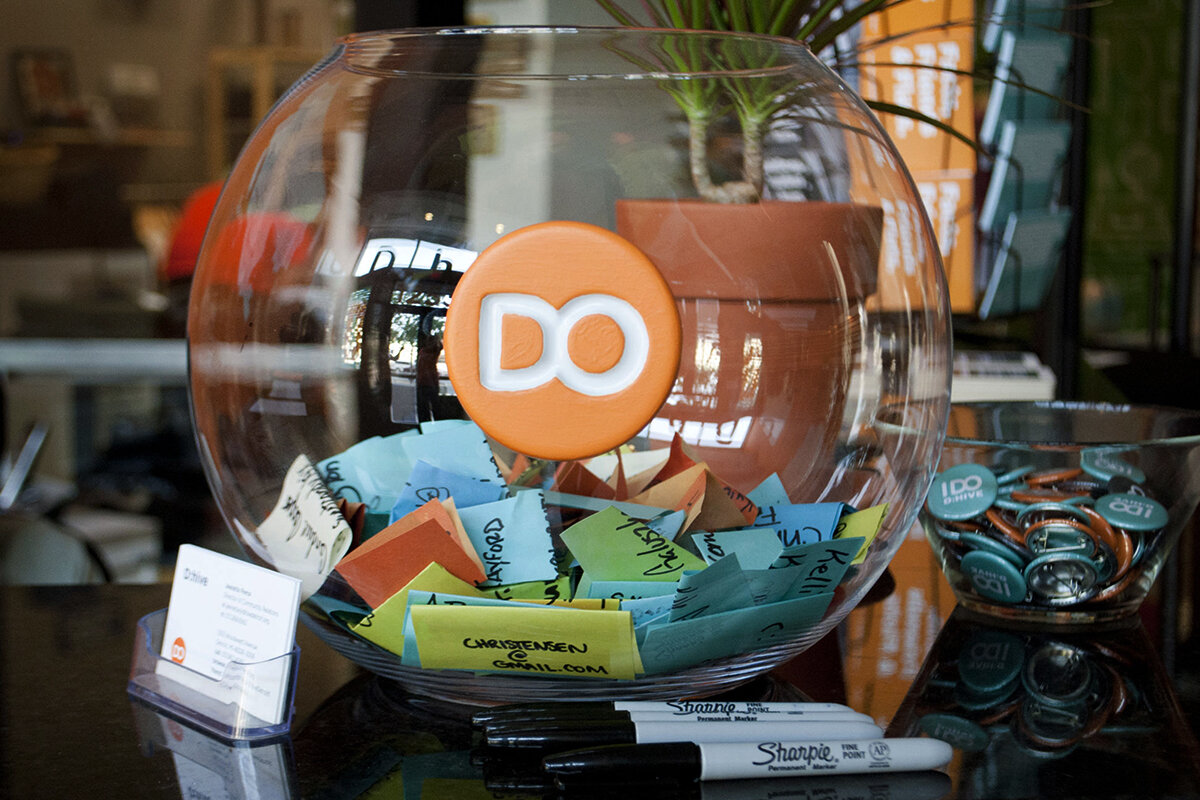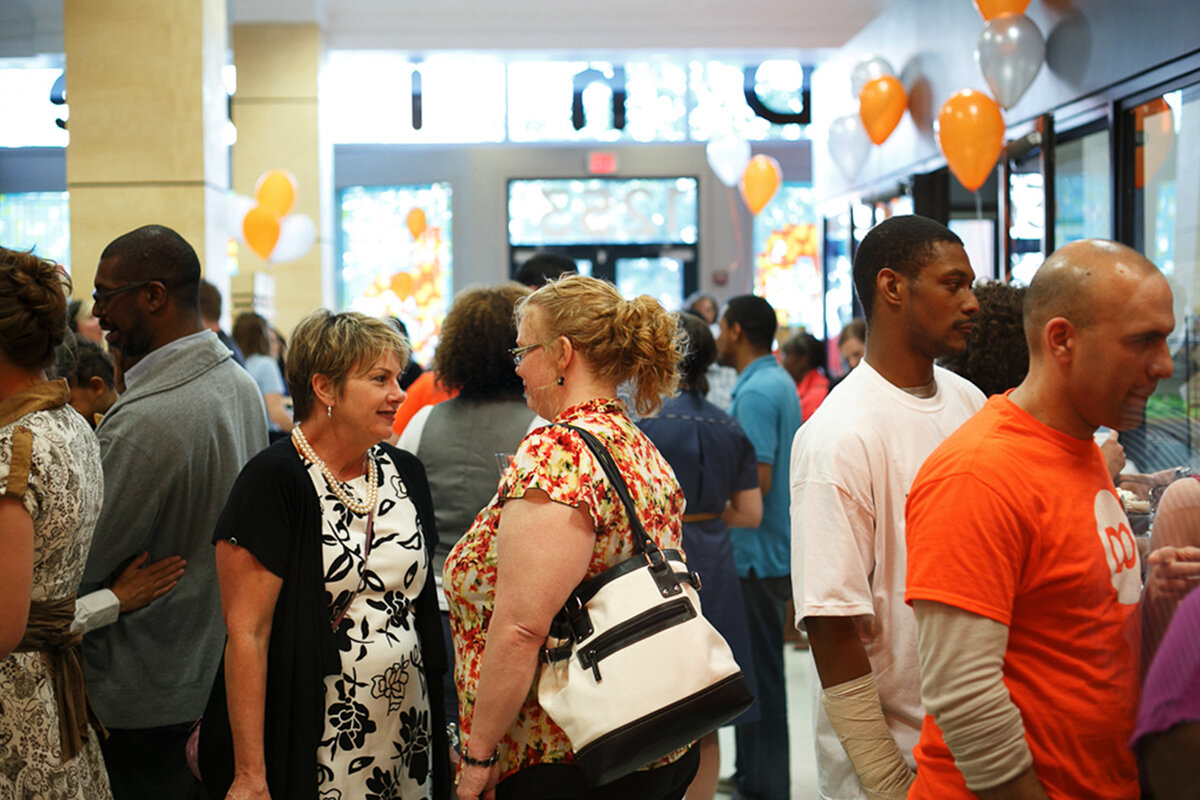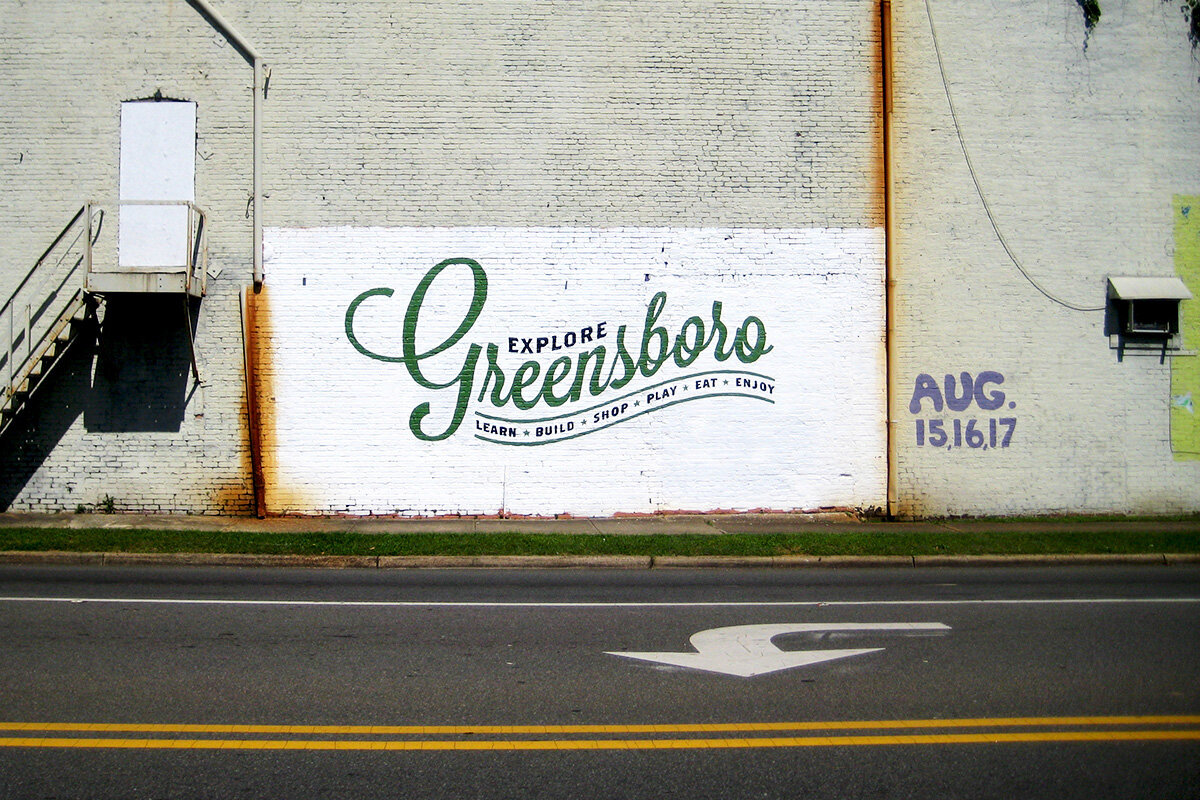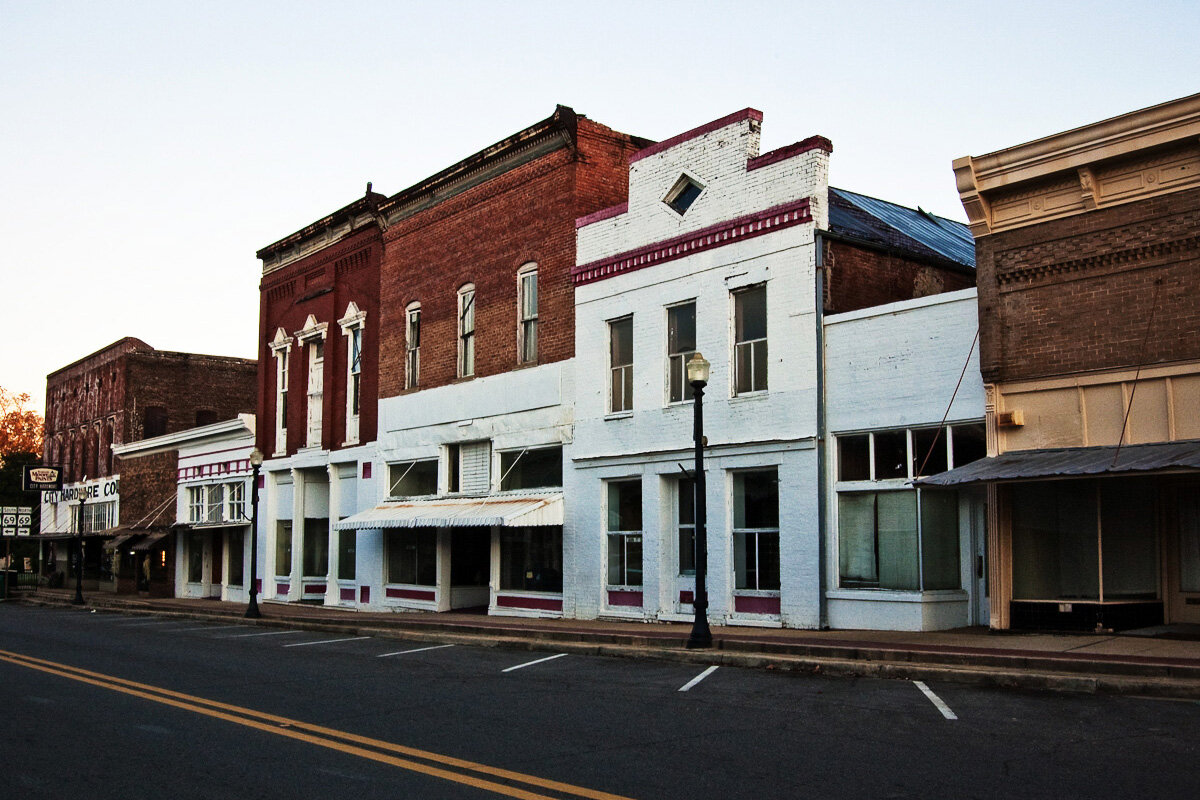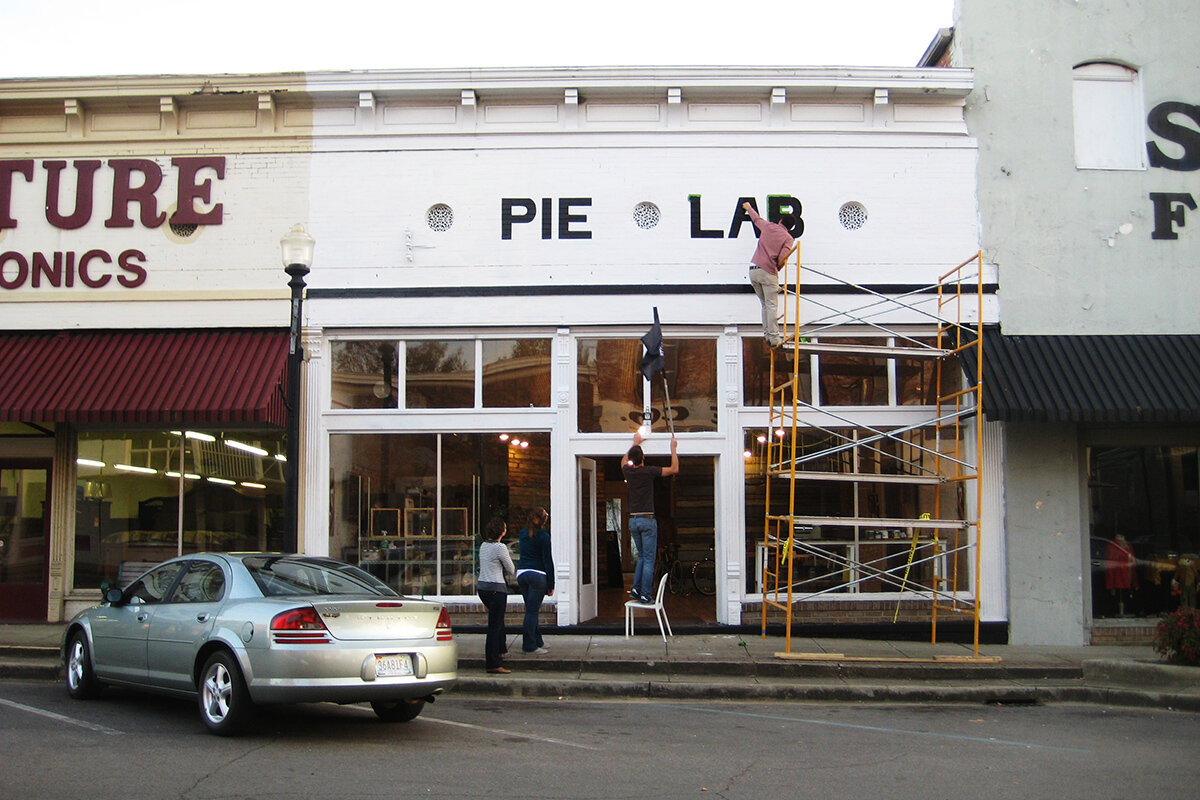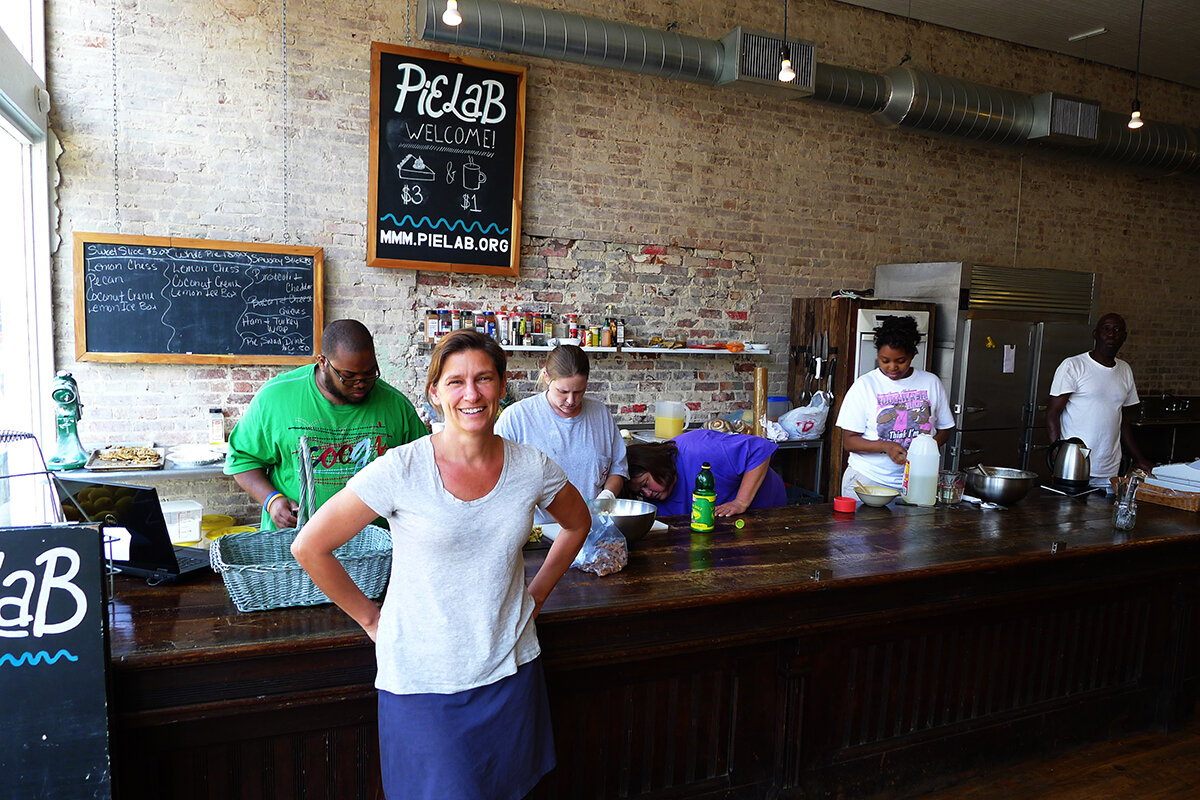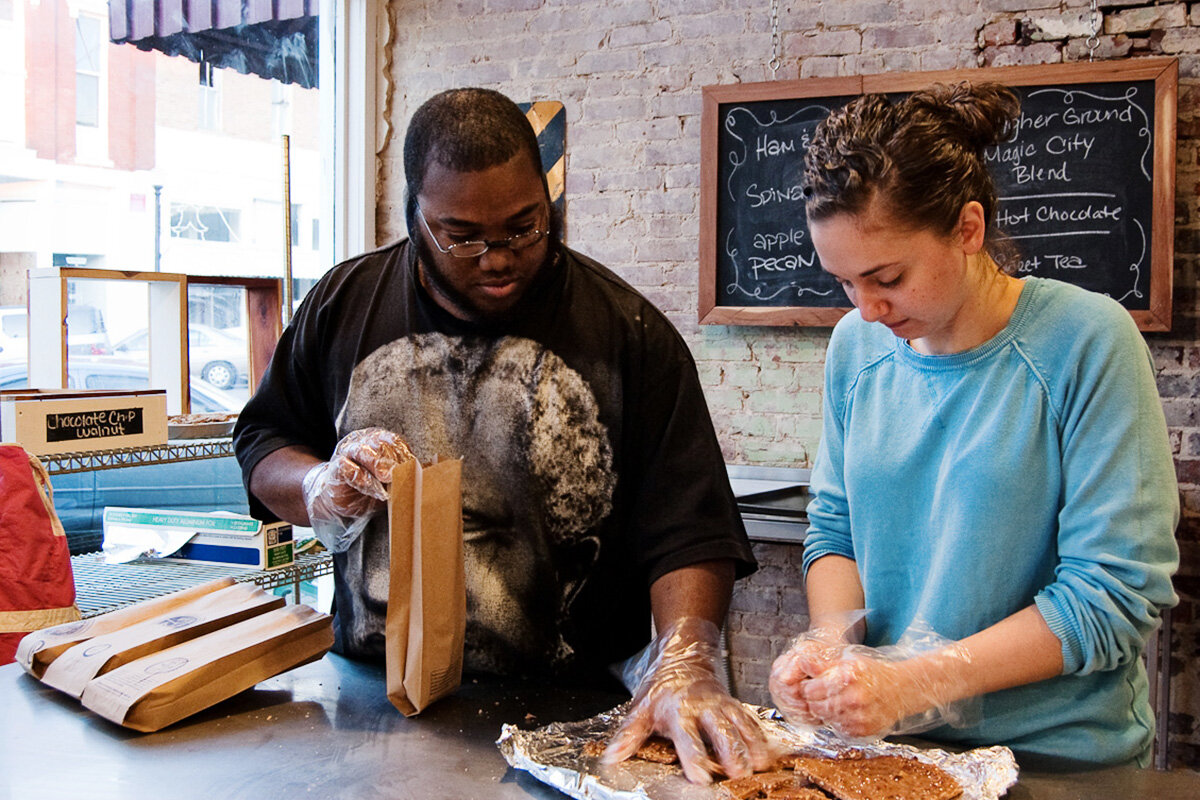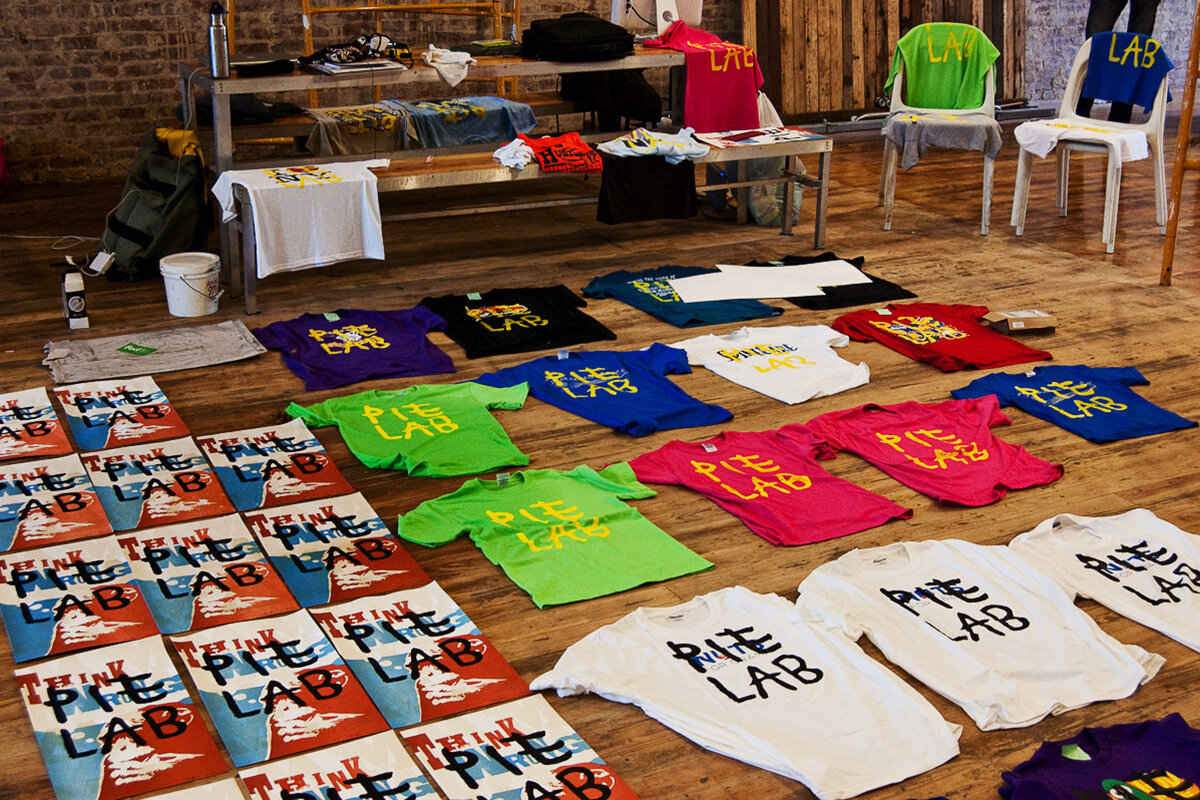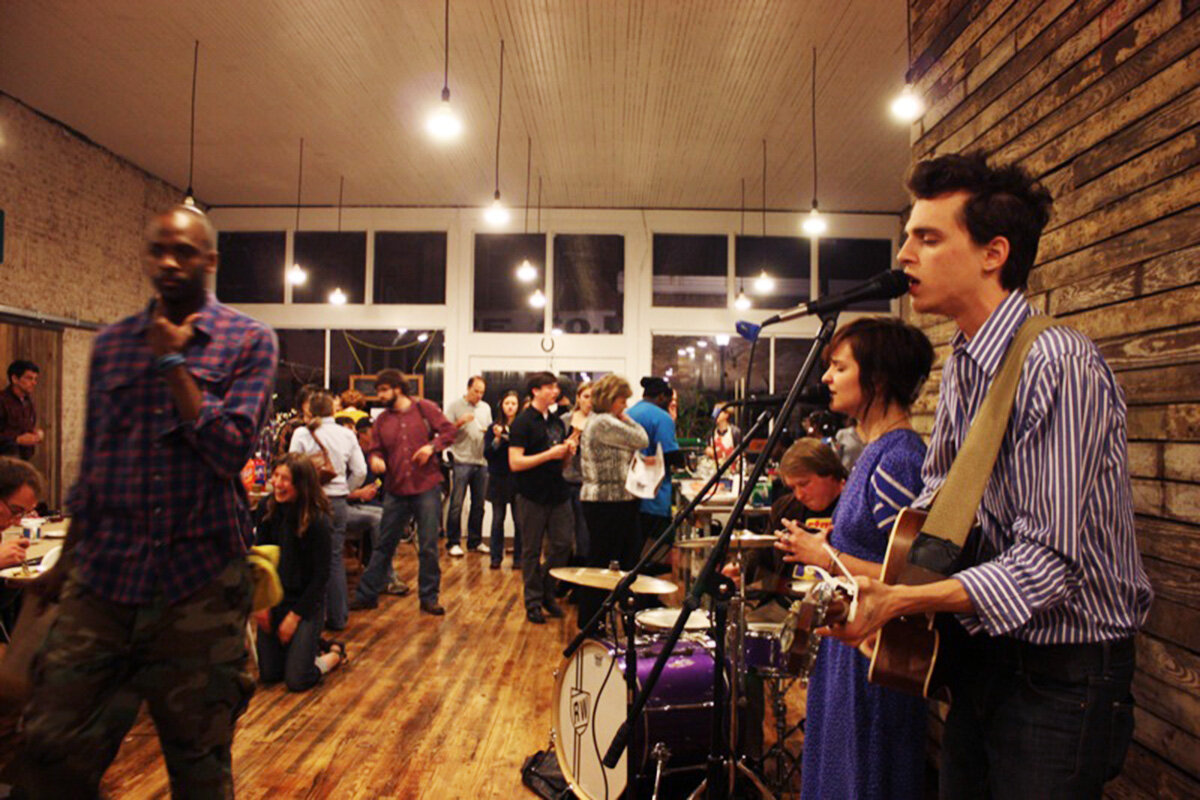Care of people, care of place.
I’ve spent most of my early career designing participatory experiences and platforms to benefit the public good. A handful of those case studies are featured below. Occasionally, I still take on projects, mostly collaborating with my husband D.J. who runs a small design studio alongside his work as a college professor. Over the past decade, I’ve learned what’s required to shape projects that promote human flourishing, which I’ve outlined here in this brief manifesto. Happy browsing.
A civic hub for launching citizen-led ideas in Cincinnati.
Project: People’s Liberty
Year: 2014–2019
Location: Cincinnati, OH
Website: peoplesliberty.org
People’s Liberty invests in people with bold ideas for Cincinnati.
In 2013, leaders at the Carol Ann & Ralph V. Haile Jr./U.S. Bank Foundation were asking three big questions:
How might we become more experimental with our grantmaking?
What could it look like to open a ground floor outpost in one of Cincinnati’s developing neighborhoods?
How do we invest in the next generation of leadership in Cincinnati?
To explore answers to these questions, we built People’s Liberty—an 8,000 sq.ft. civic hub in the heart of Over-the-Rhine—as a tool to discover if giving grants and project support directly to people could have the power to positively impact our city. Designed as a 5-year experiment, People’s Liberty awarded nearly two-million dollars to more than 100 people, employed more than 30 early-career creatives, and unleashed an active network of civic doers into the urban fabric. People’s Liberty demonstrated the power of people-focused philanthropy and has been lauded for its impact by foundations across the United States.
Partners: The Carol Ann & Ralph V. Haile Jr./U.S. Bank Foundation
Teammates: Eric Avner, Jacob Hodesh, Aurore Fournier, and Hannah Gregory
A Civic Lecture and workshop series to encourage emerging leaders to care for their cities.
Project: The Van Dusen
Urban Leadership Forum
Year: 2013
Location: Detroit, MI
Website: Van Dusen @ WSU
The Van Dusen Urban Leadership Forum brings together national experts with existing and emerging local leadership to demonstrate new ways of thinking, sharing, and problem-solving; inspire individuals towards action; and provoke intergenerational knowledge transfer by intentionally driving diverse audiences into the same room.
Richard C. Van Dusen had a lifetime concern for and commitment to urban communities, particularly metropolitan Detroit. In 2013, the family of Richard C. Van Dusen wished to shape a multi-year urban lecture series that would bring national experts to Detroit to engage in dialogue and activity with local partners and changemakers. During the inaugural year, three events took place, organized around themes of joy, beauty, and welcome.
Joy: in the Midst of Transition (June 17–18, 2013) With safety and blight both real concerns in many areas of Detroit, how can individuals, non-profits, businesses and governments encourage activities that use joy as an organizing principle? Guest speakers included Executive Director of the Laundromat Project, Kemi Ilesanmi; Archie Lee Coates IV from the multi-disciplinary design studio PlayLab; and artist, designer and urban planner, Candy Chang.
Beauty: in Unexpected Places (September 9–10, 2013) Recognizing the transitional nature of the Detroit landscape, what are unique ways to continue to enhance the aesthetic qualities of the urban fabric? Guest speakers included New York Times bestselling author, Eric Weiner; the Founder and Executive Director of ArtWorks Cincinnati, Tamara Harkavy; and co-founder of BoxCar Grocer, Alison Cross.
Welcome: in Unfamiliar Territory (December 2–3, 2013) Why is it important to welcome new faces, ideas, and entities to Detroit, and how can this be done while maintaining a sense of identity, authenticity, and pragmatism? Guest speakers included nationally renowned comedian, author, and entrepreneur Baratunde Thurston; Jeff Aronoff of D:hive Detroit; cultural critic and producer Dream Hampton; and Kirk Mayes of the Brightmoor Alliance.
Partners: Wayne State University, The Richard C. Van Dusen Endowment at WSU,
The Hudson-Webber Foundation, Little Things Labs, Model D Media, DPTV, and WDET
a design challenge to increase vibrancy and expand opportunity in growing neighborhood business districts.
Project: CoSign
Year: 2012
Location: Cincinnati, OH
Website: CoSign Cincy
CoSign is a creative placemaking toolkit for neighborhood regeneration.
In 2012, the Carol Ann and Ralph V. Haile Jr./U.S. Bank Foundation was searching for a platform to enhance economic activity and vibrancy in Greater Cincinnati neighborhood business districts, while leveraging the creative talent and resources of individuals from within the community. The foundation was also looking for a way to work with the American Sign Museum to expand its outreach into neighborhoods and to create an infrastructure to train the next generation of local signmakers.
CoSign paired local business owners with local artists and local sign fabricators to design and install a critical mass of unique, hand-crafted storefront signage in Cincinnati's Northside neighborhood—an area seeing significant reinvestment and growth. Over the course of five months, CoSign engaged 52 local artists in the development of 144 unique sign proposals for 19 Northside businesses. CoSign awarded 11 artists with a monetary stipend, educated them on the process of sign design, permitting, fabrication, and installation and provided the opportunity for their work to be displayed in a prominent public space.
The CoSign program was successfully piloted three times in Cincinnati/Northern Kentucky business districts. In the Fall of 2016, CoSign launched its national pilot program. Two communities successfully completed the program in the Fall of 2017: Iowa City, IA and Historic Valley Junction in West Des Moines, IA.
Partners: The Carol Ann & Ralph V. Haile Jr./U.S. Bank Foundation, The American Sign Museum, Alias Imaging, ArtWorks Cincinnati, and the City of Cincinnati
Teammates (Inaugural): Leslie Alexander, Eric Avner, Adrienne Cowden, Jim Guthrie, James Heller-Jackson, Jeni Jenkins, Josh McManus, Tod Swormstedt, and Michael Stout
A storefront welcome center to connect new residents to Detroit’s urban core.
Project: D:hive Detroit
Year: 2011–2012
Location: Detroit, MI
Website: dhivedetroit.org
D:hive provides individuals with the information, connections, and key tools they need to live, work, engage, or build a business in Detroit.
Over the course of 2011, a number of public, private, and philanthropic leaders reported an influx of individuals in search of an essential toolkit to help them more effectively navigate and build a foundation in Detroit. This ranged from basic orientation items (“Where’s the coolest new bar?”) to specific real estate and professional connections. From 2012–2015, D:hive was a physical storefront in the heart of Downtown Detroit that became a nexus of energy to welcome new recruits to the city and assist existing innovators in order to grow and keep more talent in Detroit.
D:hive’s success was due in large part to the rotating cast of team members, all of whom provided a critical “air traffic control” function to countless community partners, projects, and residents. Over the course of three years, D:hive welcomed 45,000 people to the storefront space, offered 30,000 people a unique city tour, connected more than 3,000 people to job opportunities, and supported 400 entrepreneurs with small business classes.
Today, the energy of D:hive lives on via the Detroit Experience Factory and Build Institute—two organizations who continue to carry D:hive’s mission forward.
Partners (Initial): The Downtown Detroit Partnership, The Hudson-Webber Foundation,
Detroit Creative Corridor Center, Detroit Economic Growth Corporation, Inside Detroit,
Little Things Labs, Model D Media, Quicken Loans, and Rock Detroit
A pie shop to bridge divide in rural Alabama.
Project: PieLab
Year: 2009–2010
Location: Greensboro, AL
Website: pielab.com
PieLab gathers community around good pie and good conversation.
PieLab was founded on a simple idea: pie+design = change. Developed in 2009 by 14 young designers during a session of Project M, PieLab formed at a time when every news report seemed to be overflowing with doom. PieLab was an antidote to the despair—a place for friends and neighbors to connect, share stories, and eat pie.
During the summer of 2009, a handful of Project M designers partnered with HERO (Hale Empowerment and Revitalization Organization), a non-profit housing resource center in Greensboro, Alabama, to transform an empty Main St. storefront into a vibrant community space, complete with a commercial kitchen. In addition to serving slices of pie and cups of coffee, PieLab piloted a number of new community-building initiatives, like retail and hospitality job training for local youth through the YouthBuild Program, a bike-and-build initiative aimed at making bicycles accessible for rural youth, and a small business workshop program to provide resources for local entrepreneurs. Seven days a week, the space was buzzing with community events like open mic nights, ballroom dancing classes, potlucks, artist gallery shows, club meetings, and visits from university groups.
Today, when you visit Greensboro, you’ll still find PieLab serving up sweet and savory dishes to hungry locals and visitors.
Partners: The Hale Empowerment and Revitalization Organization (Pam Dorr)
Teammates (Project M North, 2009): Amanda Buck, Adam Saynuk, Alex Pines, Archie Lee Coates IV, Breanne Kostyk, Brian W. Jones, Emily Jackson, Haik Avanian, Hannah Henry, James Harr, Jeff Franklin, John Bielenberg, Melissa Cullens, Reena Karia, Rosanna Dixon
